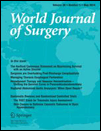Management of Thoracic Esophageal Perforation
Abstract
Background
The aim of this study was to characterize an optimal strategy in managing thoracic esophageal perforation, focusing on the differential diagnosis and treatment of patients with contained versus noncontained perforations and on the importance of the time interval between injury and repair and how that affects the outcome of a primary repair.
Methods
A retrospective study was conducted. A strict definition of contained or noncontained perforation was based on a combination of esophagography, chest CT scan, and endoscopy as well as monitoring systemic symptoms. Management options for our cohort included conservative therapy, primary repair and debridement, esophagectomy, and mesh-covered stents. Patients were stratified into two groups according to the time interval after injury: ≤48-h group and >48-h group.
Results
Between January 1997 and January 2013, a total of 66 consecutive patients (47 males and 19 females, mean age = 49.1 ± 16.2 years) were treated for thoracic esophageal perforation. Perforation was confirmed by esophagography in 51 patients and by endoscopy in 15 patients. Eighteen patients were assigned to the contained perforation group. All these patients were successfully cured without surgery. The noncontained group included 48 patients; its mortality rate was 7.7 % (3/39) with surgery and 55.6 % (5/9) with stent placement. Compared with the contained group, the noncontained group had a significantly longer length of stay (LOS) (16 ± 3.2 vs. 26.3 ± 18.7 days; p < 0.05) and a higher mortality rate (0 vs. 22.9 %, p < 0.05). In the two time-interval groups, patient characteristics, including age, gender, and comorbidities, etiologic cause, length and location of the perforation, and the incidence of using tissue buttress were similar (p > 0.05). The incidence of postoperative leak was significantly higher in >48-h group (0 in ≤48-h group vs. 37.5 % in >48-h group; p < 0.01). In addition, the >48-h group had a significantly longer LOS (18.0 ± 9.1 days in ≤48-h group vs. 31.5 ± 18.6 days in >48-h group; p < 0.01). The two deaths occurred in the >48-h group (0 in ≤48-h group vs. 12.5 % in >48-h group; p > 0.05) due to postoperative leaks.
Conclusions
Contained or noncontained perforation should be rigorously differentiated. Then, for a contained perforation, conservative therapy coupled with repeated imaging is reasonable treatment. For a noncontained perforation, a primary repair can be safely performed within 48 h after injury. After that, a primary repair is still reasonable but is associated with an increased risk of postoperative leaks.




